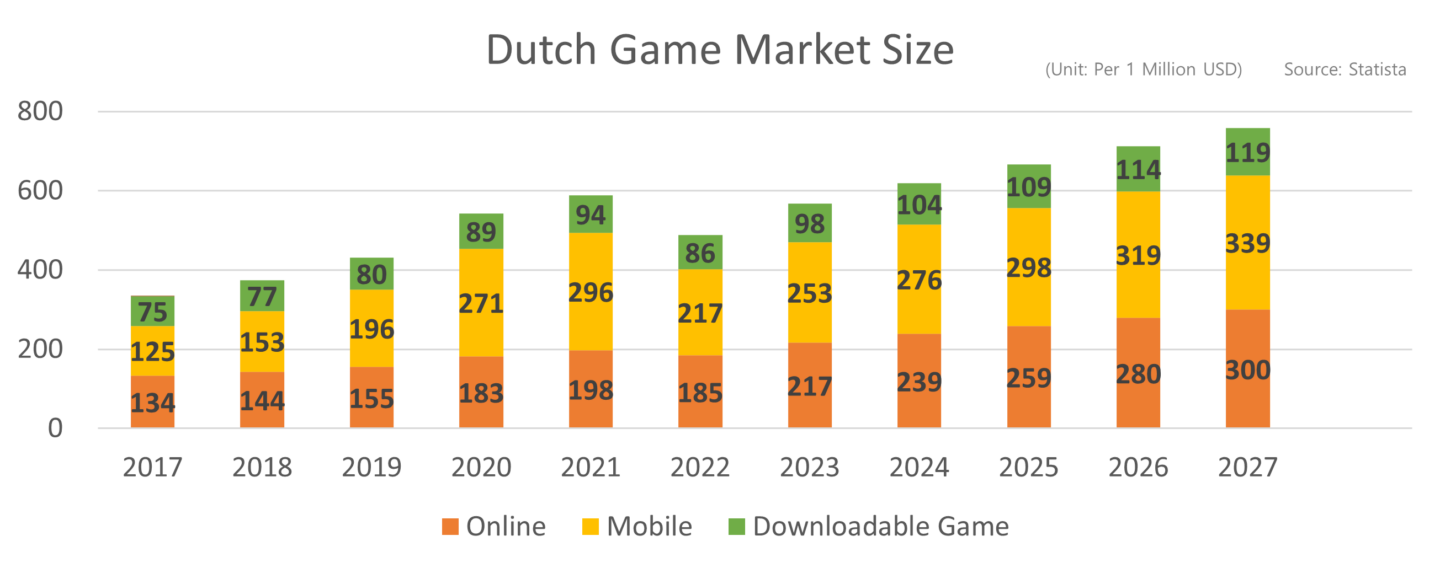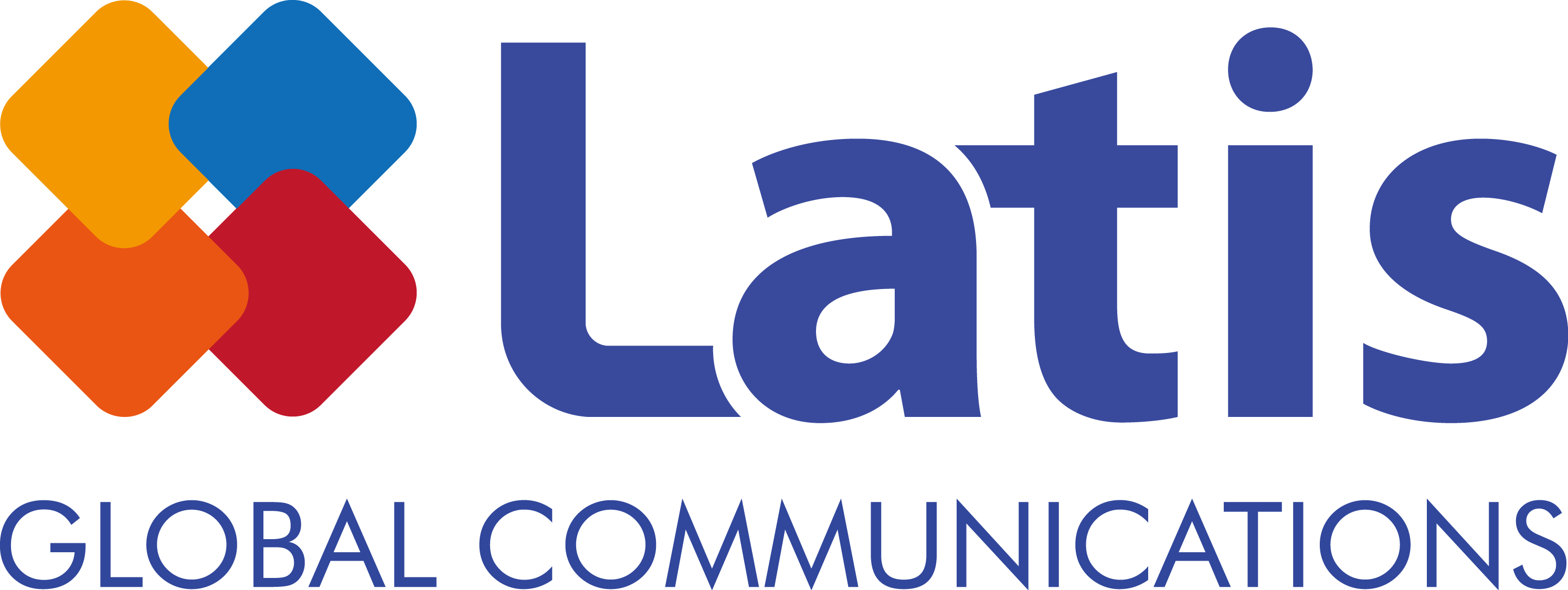

The Dutch Game Market: An Overview
- The gaming market in the Netherlands, a major transportation hub of Europe, is expected to grow significantly when compared to other Central and Western European countries.
- From 2018 to 2027, its 10-year annual growth rate has been projected to be 13.7%. By 2023, it will exceed USD 1.22 billion (approximately KRW 1.6227 trillion.)
- Since the COVID-19 pandemic in 2020, the Dutch game market has seen significant growth in mobile games.
- The annual growth rate for mobile games is expected to reach 14.6% between 2018 to 2027, which is higher than the 12.5% growth rate for Central and Western Europe as a whole, making the Dutch market a key driver for the region.
- The Dutch mobile game market has a particularly strong presence in casual gaming.
- Spil Games is a subsidiary of Azerion, one of the largest media companies in Europe. With over 30 proprietary platforms and 60 million monthly visits, the developer leads the casual mobile gaming market in the Netherlands.
- Other characteristics of the market include spearheading the development of serious games, the rapid growth of e-sports market, and an active developer training program.
- What makes the Dutch gaming market noteworthy is its strong presence in Central and Western Europe, a region where the game market as a whole has reached maturity.

Characteristics of the Dutch Game Market (Esports)
- Benelux, a region which includes the Netherlands, is internationally known for its love of esports. And among the Benelux countries, the Netherlands holds the largest share of the esports market.
- In 2022, the total prize money won by Dutch esports players in tournaments totaled USD 1.99 million (approximately KRW 2.786 billion,) ranking them 8th in Europe as of 2022.
- In particular, the Netherlands is home to Team Liquid, an esports team known to be the third most valuable team in the world, after the US’ TSM and 100 Thieves. As of 2022, the team’s net worth is USD 4.4 million (approximately KRW 0.594 trillion.)
- Dutch players have won the biggest prize money from Epic Games’ Fortnite. The current accumulated prize money is USD 3.34 million (approximately KRW 4.5 billion,) which accounts for approximately 20% of the total accumulated esports prize money in the Netherlands.
- The prevalence of LAN parties, still thriving in the Netherlands, is often attributed to the huge popularity of esports there.
- A LAN party is a network social where people gather in one place to play games for as little as a few hours or as long as a few days.
- With advancements in the internet, LAN parties have become less common. However, Camp Zone, the world’s largest LAN party, is still held in the Netherlands. And since both revolve around the idea of gathering together to enjoy games, there seems to be a significant connection between esports and LAN parties.
- Team Liquid began as an esports team dedicated to Blizzard Entertainment’s <StarCraft> in 2000. The team has also put a lot of effort into producing new players, by doing such things as partnering with Dell’s Alienware in April 2023 to open the world’s largest esports training facility in São Paulo, Brazil.


Characteristics of the Dutch Game Market (Serious Games)
- The Netherlands has historically been recognized as a powerhouse when it comes to serious games. And as such, Korea has tried to study, analyze, and benchmark the Dutch serious game market for a long time.
- Serious games, also known as applied games, refer to games designed for a specific purpose, such as health, promotion, education, management, medical care, advertising, welfare, among others.
- According to the Dutch Game Association, out of 308 game developers located in the Netherlands, 67 companies, or about 21.7%, are involved in developing or publishing serious games.
- Serious games in the Netherlands have been particularly successful in the fields of health and education. Some of the major examples are: Tover, a developer of applied games for medical care; &RanJ, which developed a financial education game for children; and Game Tailors, which produced a game to improve language development for children with disorders.
- In 2015, Tover, a developer of applied medical games, released Tovertafel, an interactive augmented reality (AR) game designed to improve cognitive abilities and social skills in patients with dementia or those with intellectual disabilities.
- According to Tover, Tovertafel demonstrated significant therapeutic benefits, with 93% of the patients reporting improved social interaction and 81% of them experiencing improvements in their attention span. The game won the Editor’s Choice Award at the 2022 U.S. Consumer Electronics Show (CES).
The Future of the Dutch Game Market
- The Dutch gaming industry continues to grow among the mature markets in the Central and Western European region, and the establishment of the Dutch Game Garden in 2008 has led to active support for the gaming industry.
- B2C gaming companies have significantly profited from the social distancing policies implemented during COVID-19, and the Dutch gaming industry’s revenues are expected to continue to increase until at least 2027.
- Going forward, the mobile gaming market is projected to make up the largest portion of revenue, followed by online gaming.
- According to Tom Jogens, Communications Manager of Dutch Game Garden, the Dutch gaming industry, in comparison to other European gaming industries, specializes in developing applied games.
- Currently, the Dutch gaming industry is going through a reinvestment phase. Attempts to stimulate the market are being developed with such recent initiatives as the Midgame Fund, where about 30 developers have come together as investors to share their knowledge and help lower the barrier to entry when it comes to game financing.


